“Eh… So… Are you still homeschooling?”
I hear that question a lot. And I get it.
I mean, doing school every single morning. With three kids (one being a wild toddler). While running a blog and our doTERRA business. And writing a real, published cookbook. And keeping up with a homestead, etc, etc, etc.
It sounds crazy. Well, it IS crazy. Maybe I’m crazy.
But regardless, the answer is ‘yes’. We are in the thick of our third year of homeschooling and we don’t plan to stop any time soon. I think we’re lifers, y’all.
I’ve written homeschooling posts for our previous two years, (here’s year one and here’s year two) so I figured I’d keep the tradition alive this year and write up what we’re doing this time around.
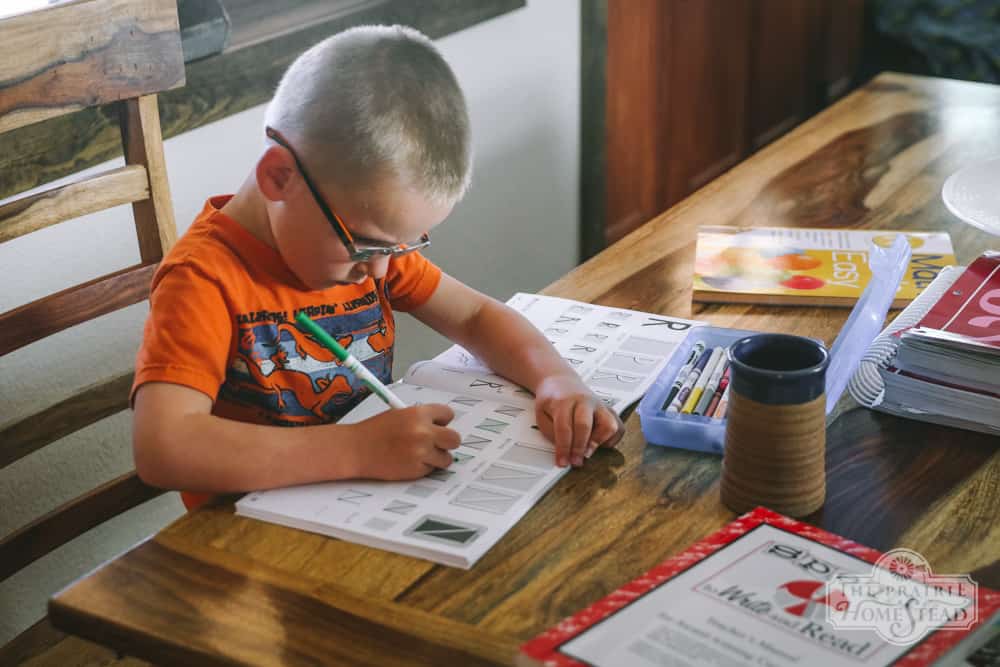
Why We Homeschool
Our reasons for diving into Year 3 are the same as they were our very first year. In a nutshell: We’ve created a unique life that we love and I don’t want my kids to miss out on it for 7+ hours a day. Homestead life is rich with lessons, creative pursuits, and opportunities to develop skills, and I personally hate the thought of sending my kids away from this environment for the majority of their childhood. It’s important to us to raise our children to be problem-solvers and entrepreneurs, not just employees– I think homeschooling fosters that idea beautifully.
(This is where I interject my disclaimer: homeschooling is not for everyone. Truly. The intention of this post is not to judge or condemn anyone who chooses public schooling. Heck, who knows? Our kids could end up there sometime in the future. As much as I love it, homeschooling is not my sacred cow.)
That being said, homeschooling isn’t perfect and we certainly aren’t perfect. Having been homeschooled myself (K-12), I’ve witnessed very successful homeschool families and extremely dysfunctional ones. But that happens with public schooling, too. There are days where our mornings are ridiculously organized and orderly, and days (kind of like today) where everyone has a hard time staying focused and the toddler is sticking blocks up her nose while we’re doing spelling words. It comes with the territory.
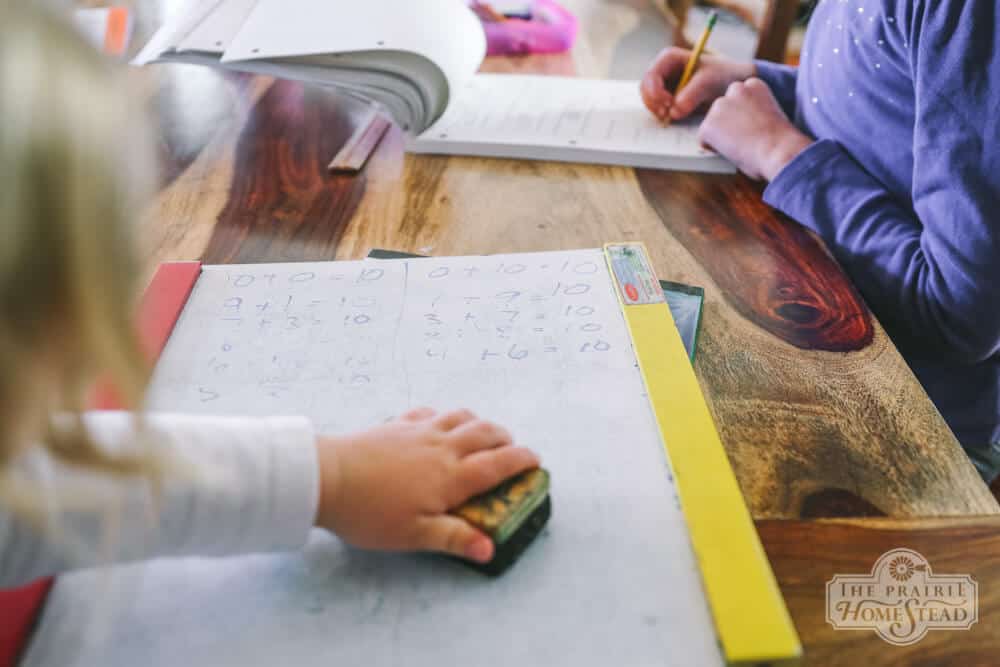
Homeschooling with Three Kids
Speaking of toddlers, doing school with a two-year old in the house is… interesting. I haven’t yet developed a foolproof strategy of getting school done with other little ones in the house. I doubt I’ll ever get it completely figured out– we just do the best we can. Toddlers have a knack for creating chaos, no matter how good your intentions. Our “plan” is usually for her to play with special toys while we do our lessons, but that doesn’t always work and sometimes she ends up sitting on my lap grabbing at Unifix cubes and flashcards with her octopus arms.
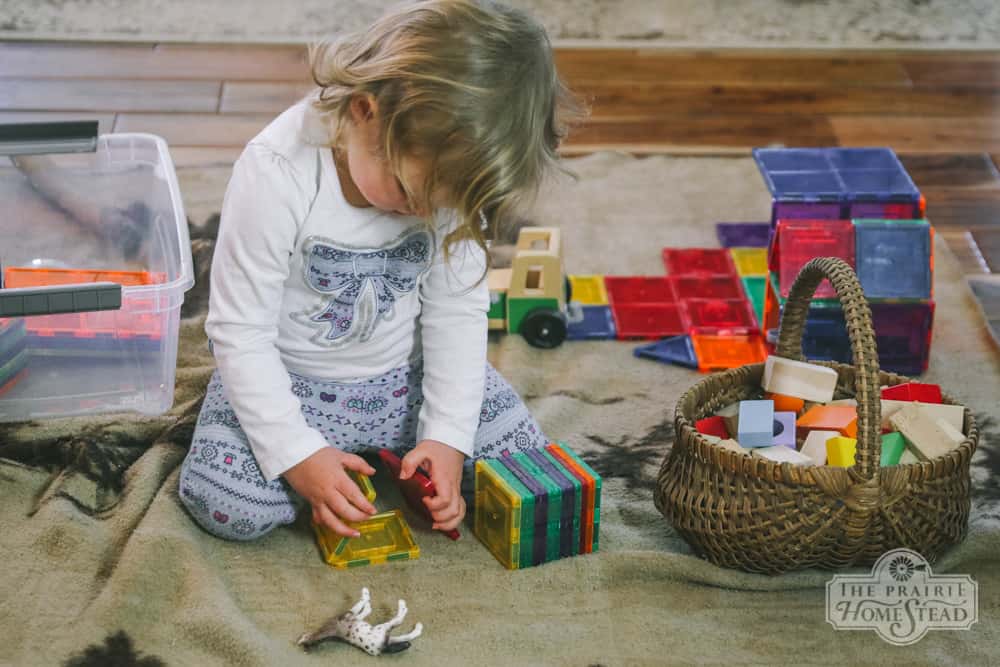
(By the way– these magnetic tiles are the most-played with toy we own. They are out on a daily basis.)
On the flip side, she’s learning by osmosis (she’s starting to count) and she can hold her pencil with proper form while she pretends to write the letter “a”. So there’s that, I suppose.
This is also my first year schooling two kiddos at once (Kindergarten and Second Grade), which has required some juggling. Prairie Boy turned 5 in October, and if he had been going to public school, he likely would have waited to start Kindergarten until next year. That was initially my plan, since he showed very little interested in schoolwork and had a hard time sitting at the table when we started in September. However, something clicked this winter and he’s been soaking up the lessons like crazy. Right now he’s on track with Kindergarten-level work and really enjoys it, so I’m rolling with it. I can’t believe how much he’s changed in just a few short months.
Homeschool Curriculum: Year Three
The amount of curriculum choices out there will make your head spin, but I am committed to sticking with my plan of keeping things simple. I do not try to recreate a traditional classroom, and we focus on the basics. I especially love curriculum that can be used for multiple grades at once, as I believe there is much value in the one room classroom model.
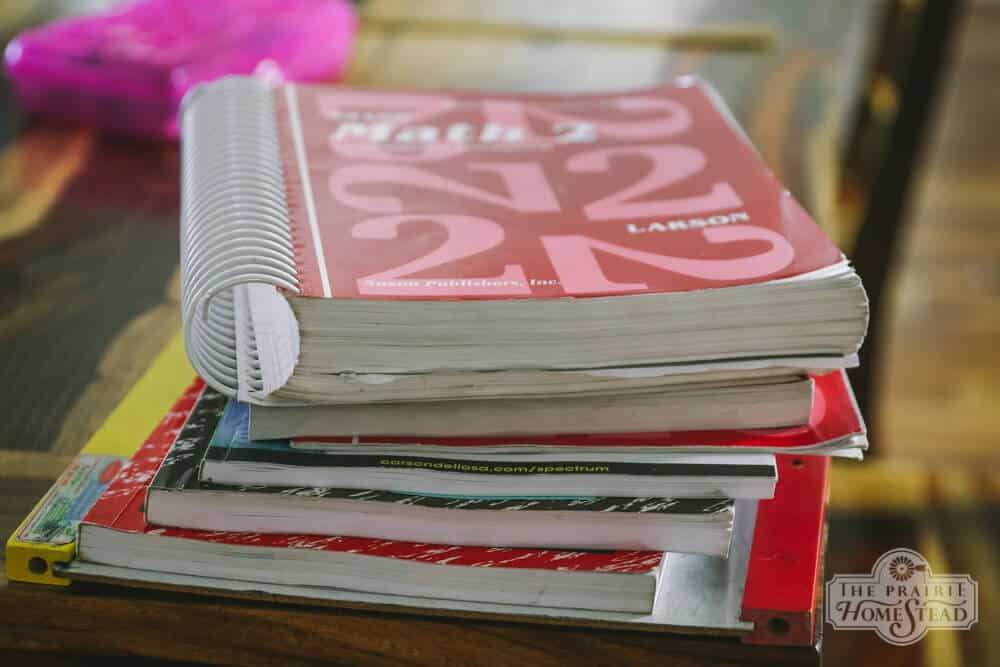
Here’s what we’ve been using this year:
(this post contains affiliate links)
Reading/Writing/Spelling:
Ever since she started Kindergarten, Prairie Girl has been especially strong in math, but slightly weaker in language arts. We had tried two different reading curriculums previously, and I just didn’t love them. She was getting frustrated and reading wasn’t flowing for her. I spent hours searching for different options, even though I knew in the back of my mind what we’d end up using… My mom used a book called The Writing Road to Reading with me, and I hated every minute of it in elementary school (sorry, just keepin’ it real). However, it gave me an extremely strong foundation in writing and reading, and I still use the principles I learned in that book to this day. (The only higher education I have are two Associates Degrees in Equine Studies– that darn book gave me the tools I needed to turn writing into a career. Who would have thought?)
And so, much to my chagrin, I found myself hunting down that very same book to use with Prairie Girl. It’s been revamped over the years and is now called Spell to Write and Read, but the principles and method are basically the same.
But it hasn’t necessarily been a slam dunk. Let me start with the GOOD first:
In less than six months of implementing Spell to Write and Read, Prairie Girl’s reading has improved dramatically. She’s reading fluidly and confidently, and more importantly, she is understanding WHY words are spelled and pronounced certain ways. I felt like the other books were based too much on all the exceptions to the rules… (“A” says “ah”, but wait… not here, or here, or here, or here…) SWR teaches all of the letter sounds right off the bat, along with spelling rules, so the English language suddenly becomes so much more logical. There are still exceptions, of course, but they are fewer and far between. It’s enlightening, even as an adult. We introduce 30-40 new spelling words each week through the book’s lessons. Focusing on spelling as a foundation has skyrocketed her reading ability and comprehension, and when it’s time to read a storybook, we don’t have the tears and frustration we used to.
SWR functions as a spelling, writing, and reading curriculum (supplemental story/chapter books are recommended once the child is ready), and this all-in-one approach fits perfectly with my “keep it simple” plan.
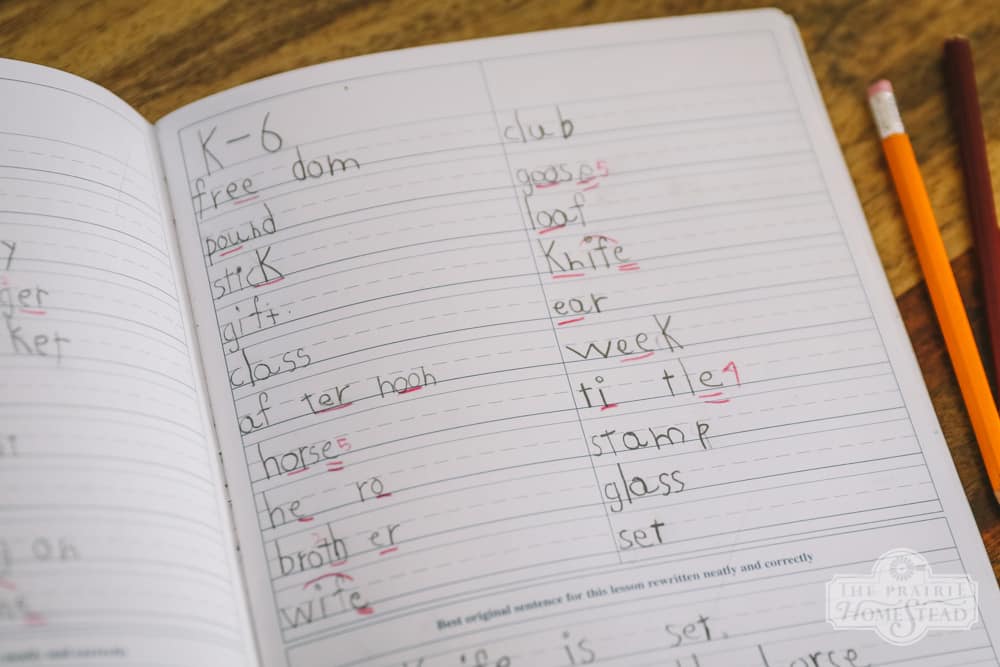
However, there is another side to SWR:
It is a BEAR to implement. While the curriculum itself is brilliant and I believe wholeheartedly in its premise, the organization of the books are less than impressive. They recommend setting aside a large chunk of time to learn how to teach it, and they aren’t kidding. My first clue should have been the multiple “getting started” guides that came with it– no other curriculum I’ve ever seen or used needs this many different instructional sheets, websites, and videos. It’s insane. I may or may not have said some bad words while sitting at the table late at night trying to decipher it all.
Once you’re familiar with it? It’s a cakewalk. But the way the books are laid out feels clunky and confusing to me.
That being said, the time I spent figuring it all out (about 6-8 hours, I think) was worth it, and I’d do it again for the benefits I’m seeing with my kids. Prairie Boy has already worked through all the letter sounds of the alphabet and I’m excited to use SWR with him from the very beginning. I suspect reading will flow more easily for him not having used other books first.
We also read aloud almost daily. Little House in the Big Woods, Farmer Boy, and Mr. Popper’s Penguins have been our favorites so far this year.
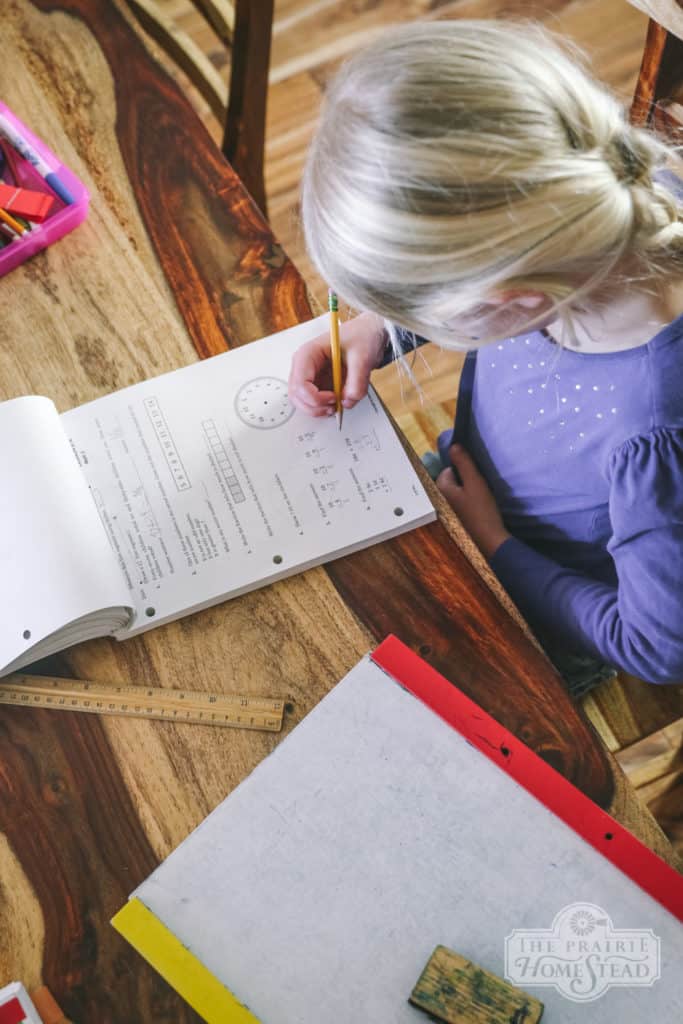
Math:
We used Singapore Math for first grade last year, and while it gave Prairie Girl a strong foundation, I didn’t love how they presented some of the concepts. We switched over to Saxon 2 this year and we’ll be sticking with it for next year as well. I like Saxon’s no nonsense approach and the simplicity of how they present each concept. She’s been breezing right through it, and I’m seeing huge advances in her understanding of various concepts since we started the year.
Math with Prairie Boy started out informally. We did a lot of counting at the beginning of the year, as well as making patterns with blocks and shapes. We’re working on counting by 10s and 5s, and he is grasping basic addition and subtraction concepts. We did most of this with simple manipulatives and a white board, I grabbed a DK Children’s math workbook for him a few weeks ago for added reinforcement, but it’s nothing we haven’t already covered.
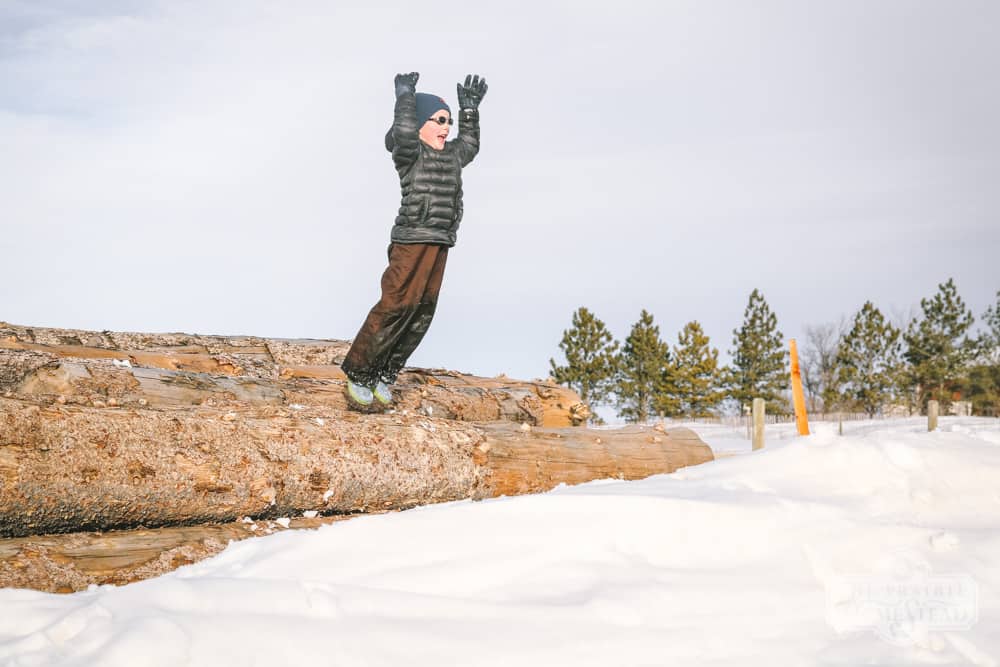
History:
We’re using Story of the World again this year and I love it. It’s no frills, but the kids adore it and I love that my 5-year old can tell me about the Hanging Gardens of Babylon and the library of Ashurbanipal. I highly recommend getting the accompanying activity guide for each book, although we don’t always do the more complicated crafts (crafts just ain’t my thing). The Prairie Kids love the coloring pages, and I have noticed a huge different in their retention when they color a page on the story topic.
Science:
I enjoyed Dr. Jay Wile’s biology and chemistry books when I was in high school, so I decided to try his elementary science curriculum this year, Science in the Beginning. It’s marketed as a book for K-6, though I’ve found most of the lessons are a little too advanced for a Kindergartener and a Second Grader. It has an experiment for every lesson, which I appreciated, though some are better than others. We’re using portions of it this year, and I plan to implement more as they grow older. At their ages, most of their science lessons are a part of our every day life, so at this point, they are learning more science during the non-school portion of our days. (Weather, solid/liquid/gas, water cycle, seeds and plants, etc)
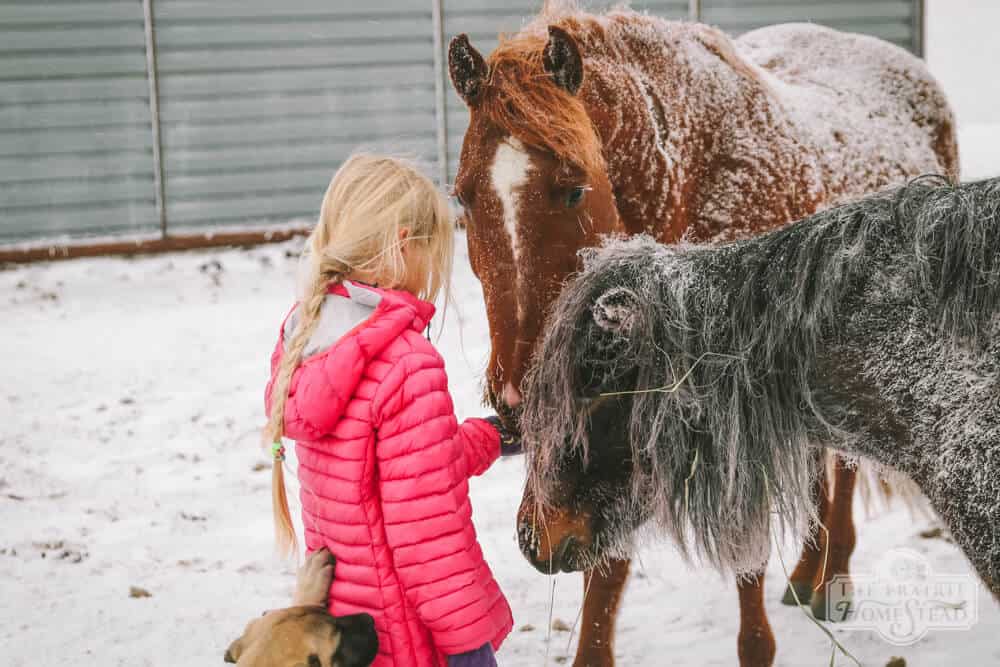
Moving Forward
And that’s pretty much the extent of it. We start school by 8am every day (I’m a stickler for staying on a schedule– our life functions best that way), and we usually finish no later than 11am. Afternoons are for playing outside, riding horses, art projects, puzzles, legos, or helping Daddy in the shop. I see us adding more into our days as the kids get older, but right now I’m mainly focused on giving them a very strong foundation in math and reading and going from there. Next year we hope to join our local Classical Conversations community (as a way to connect with other homeschoolers) and Prairie Girl will be doing 4-H once she turns 8.
It’s messy, crazy at times, and not for everyone, but I can genuinely say I’m enjoying this homeschooling ride. Do you homeschool? Leave a comment and share your favorite curriculums!
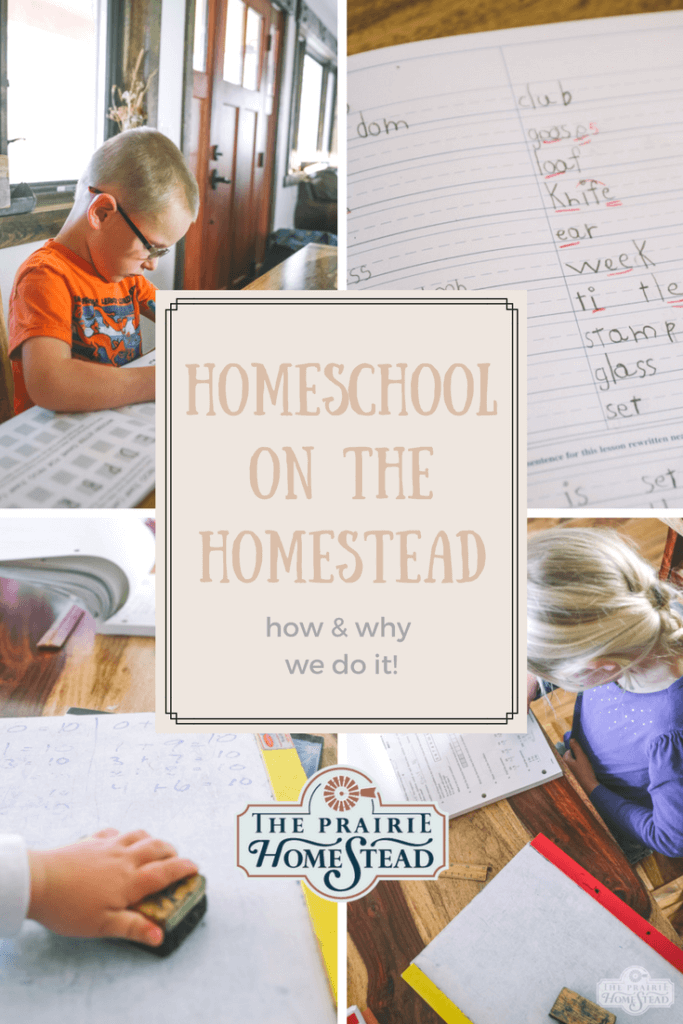
SaveSave
The post Homestead Homeschooling: Year 3 appeared first on The Prairie Homestead.
This Article Was Originally Posted at theprairiehomestead.com Read The Original Article Here
The post Homestead Homeschooling: Year 3 appeared first on Homesteading Alliance.
No comments:
Post a Comment